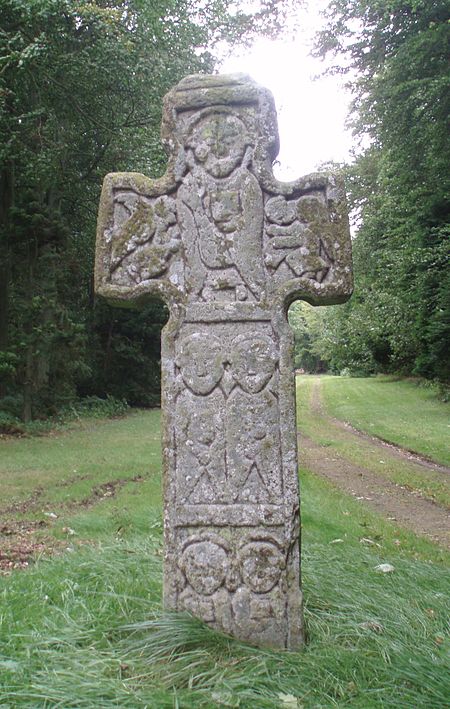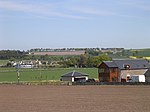Camus Cross

The Camus Cross, otherwise known as the Camuston or Camustane Cross, is an Early Medieval Scottish standing stone on the Panmure Estate near Carnoustie in Angus, Scotland. First recorded in the 15th century in a legal document describing the boundaries between Camuston and the barony of Downie, and described in the 17th century by Robert Maule, it is a freestanding cross, rare in Eastern Scotland. The cross is thought to date from the 10th century, and exhibits distinctive Hiberno-Scottish mission influences, in common with several other monuments in the area. Tradition and folk etymology suggest that the cross marked the burial site of Camus, leader of the Norse army purportedly defeated by King Malcolm II at the apocryphal Battle of Barry. The name of the stone is likely to derive from the extinct village of Camuston, which has a Celtic toponymy.
Excerpt from the Wikipedia article Camus Cross (License: CC BY-SA 3.0, Authors, Images).Camus Cross
Geographical coordinates (GPS) Address Nearby Places Show on map
Geographical coordinates (GPS)
| Latitude | Longitude |
|---|---|
| N 56.530647 ° | E -2.78357 ° |
Address
DD5 3QT
Scotland, United Kingdom
Open on Google Maps





